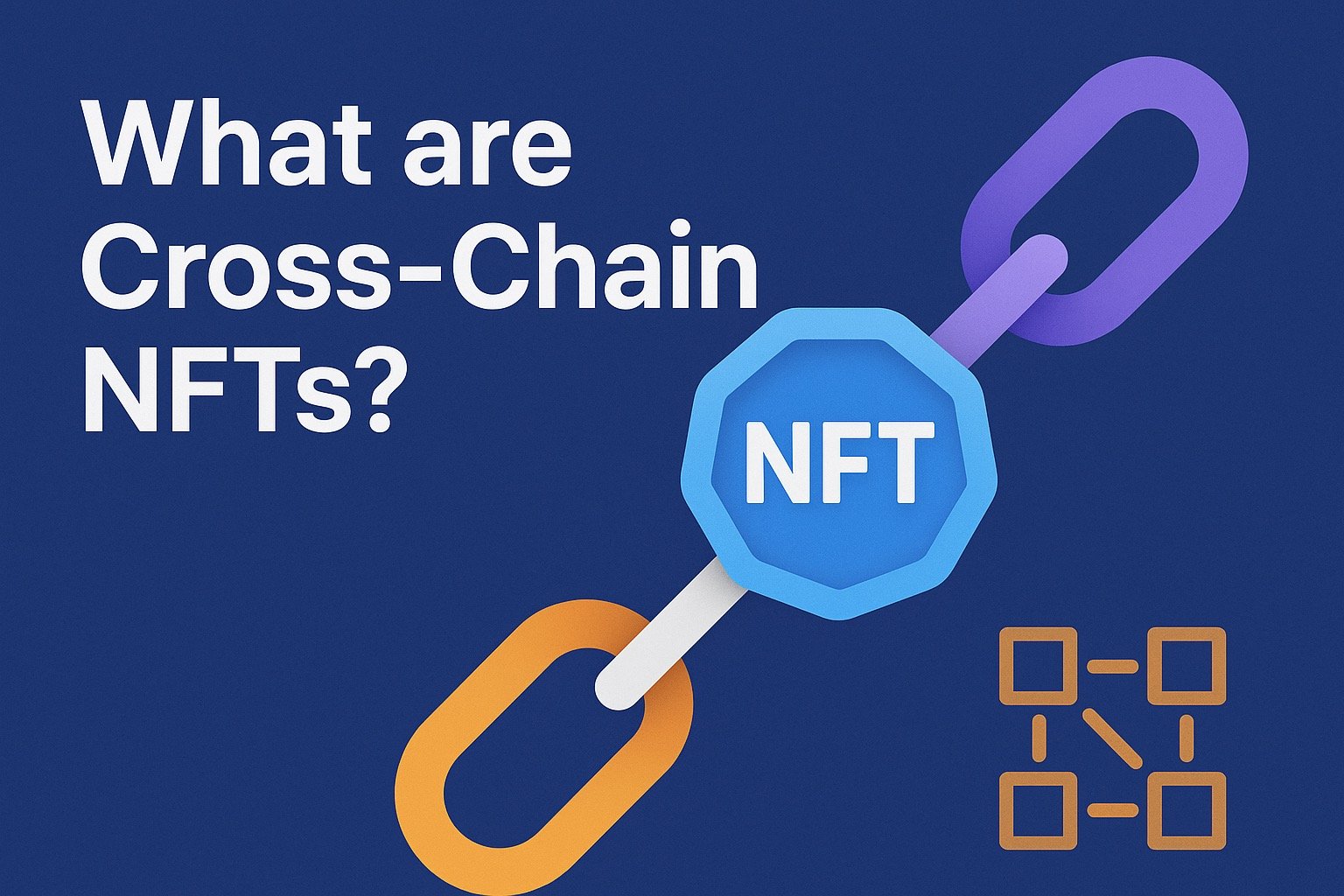What are Cross-Chain NFTs?


NFTs live on a single blockchain (like ETH, Solana, or Polygon). They are unique digital assets whose ownership is tethered to the chain they were created on. The challenge that plagued NFTs before cross-chain NFTs was that if an NFT was minted on ETH, it was usually not possible to use or directly trade it on Solana, Binance Smart Chain, or other blockchains. This is where cross-chain come in, these NFTs made to move or interact across multiple blockchains. Read on to view why they are significant.
Why Do We Need Cross-Chain NFTs?
Traditional NFTs are limited to a specific blockchain, where they can only be sent to users who have access to that particular blockchain. For example, when you’re on an NFT marketplace that operates on a blockchain, you need to transact with NFTs that are minted specifically on that blockchain. This results in millions of NFTs in circulation and numerous blockchains, leading to a lack of interoperability between blockchains. For example, if you have a Solana NFT, you can’t list it for sale on an ETH marketplace.
In addition, most NFTs are on ETH, which has a high transaction fee (Transaction fee). The fees range from $1 to $1000, depending on the day. Not economical on average.Due to the varying and limited functionality of smart contracts on some blockchains, scam NFTs could thrive. In a happenstance, you have an ERC token but want to trade it on a marketplace built on Solana? At the moment, only one option is available to consider.
How to move NFTs across Blockchains
The only way can be moved across blockchains is with the aid of a bridge. A blockchain bridge, often referred to as a bridge, is designed to allow users to transfer tokens from one blockchain to another, similar to a bridge, right? These software programs are third-party, and simultaneously, they monitor both the network being used and the network to which users want to connect.
A classic example of a bridge is the Wormhole, which allows connections between the ETH and Solana blockchains through the wrapping of tokens, thereby enabling them to operate on diverse blockchains.
How the Blockchain Bridge Works?
For instance, when trying to move an ETH NFT to to trade on a specific marketplace that only lists Solana NFTs. The bridge locks your NFT on the ETH blockchain (placing it in a “vault”) and mints a wrapped version of the NFT on Solana.
The bridge can also unwrap the NFT, returning it to its original blockchain, where the wrapped token is burnt. Due to the uniqueness of NFTs (i.e., only one of its kind exists), the wrapped NFTs are required to be burned, as only burning will return it to the original NFT, which would be locked and loaded for another blockchain transaction.
Key considerations regarding bridges
Ensure the third party centrally managing the bridge is trusted. The third party holds the original token during the transfer of NFTs from one blockchain to another. Ensure there is an adequate amount budgeted for Transaction fees, as wrapping and unwrapping of tokens incurs Transaction fees. A wallet should be in place, as it is needed for a blockchain bridge.
Are alternative approaches for NFT transfers being explored?
Of course! Currently developers are working on cross-chain platforms where one can transfer NFTs to multiple metaverses, parallel chains, crypto games, and marketplaces with ease.
The large idea behind full cross-chain interoperability is simple: letting people move tokens freely between diverse blockchains without needing bridge software in the middle. The technology is still in its ahead days, but it’s already clear that it will shape the future of NFTs and how they’re put to use
Advantages over traditional NFTs
Such evolution affords cross-chain NFTs the following advantage over the ideal NFT:
Interoperability: The ability to be transferred from one blockchain to another without losing identity. For example, an NFT minted on ETH could be sent to Binance Smart Chain and still represent the identical asset.
Bridging/Wrapping: This process typically involves “locking” the NFT on the original chain and creating a wrapped version of it on the target chain. When you move it back, the wrapped one is burned, and the original is unlocked.
Some of the benefits of cross-chain NFTs are more liquidity, as they can be traded across multiple marketplaces. Another benefit is the flexibility they enjoy due to the assets; either the game or the metaverse can be used across ecosystems. Cross-chain NFTs can be moved to cheaper blockchains for transactions.
Innovations working on cross-chain technology
Scotty Beam is one of the projects that offers a teleportation service that transfers NFTs across blockchains by “beaming” them. Tokens can be transferred across ETH, BSC, Polygon, SOL, DOT, and FLOW.
Polkadot, through the Polkadot Network, affords the interoperation with many blockchains without the need for a blockchain bridge.
Wanchain bridges multiple blockchains without the need for a third-party platform and instead creates cross-chain interoperability through decentralized direct bridges.
Bottom line
Cross-chain NFTs are breaking down walls and reaching new frontiers, from traditional NFTs stuck on a single blockchain to flexibility and movement across diverse blockchains, improving value and finding new use across multiple ecosystems. Although the tech is still evolving, it promises a future where NFTs are more flexible, affordable and interoperable.







